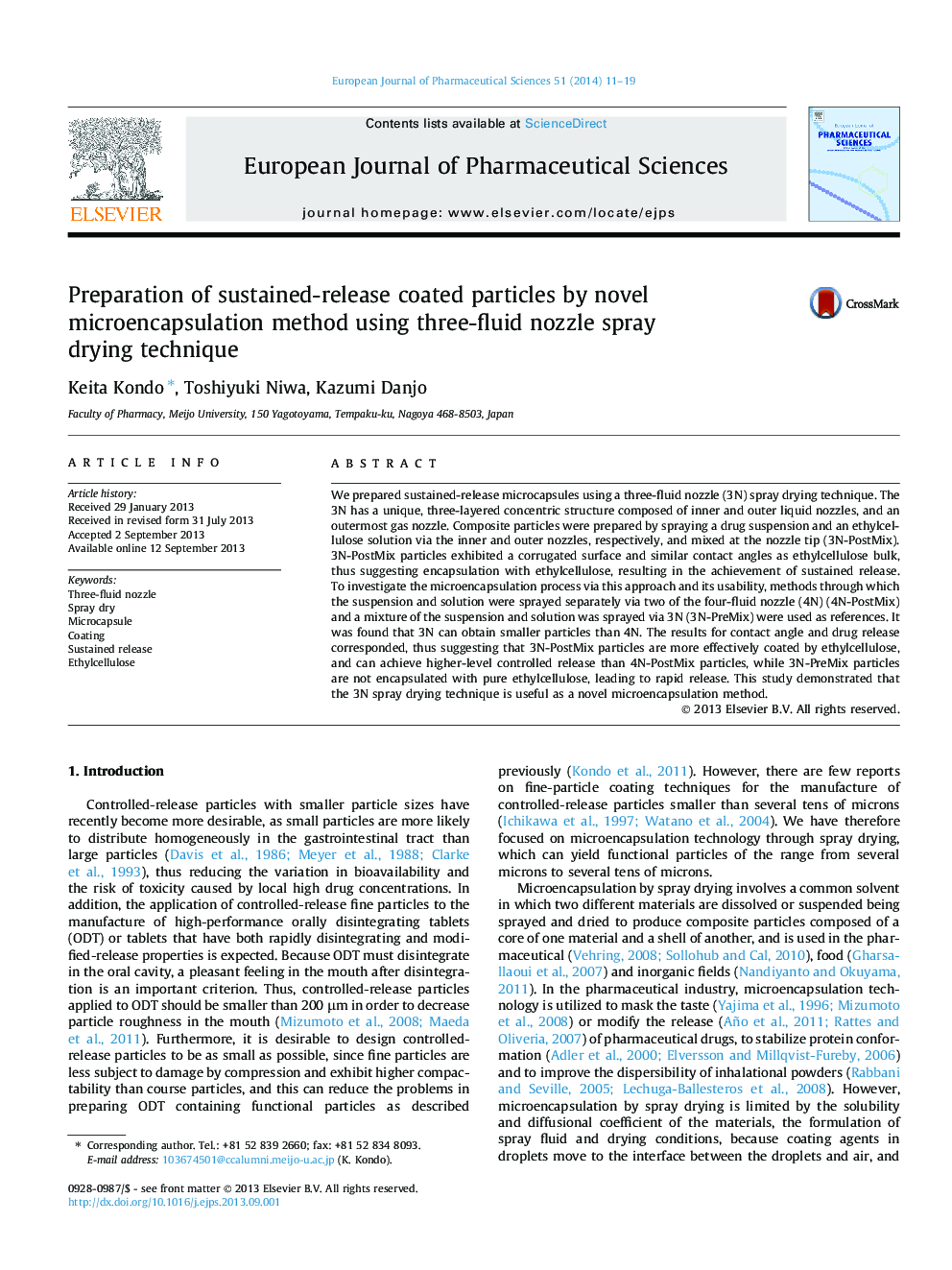| Article ID | Journal | Published Year | Pages | File Type |
|---|---|---|---|---|
| 2480618 | European Journal of Pharmaceutical Sciences | 2014 | 9 Pages |
We prepared sustained-release microcapsules using a three-fluid nozzle (3N) spray drying technique. The 3N has a unique, three-layered concentric structure composed of inner and outer liquid nozzles, and an outermost gas nozzle. Composite particles were prepared by spraying a drug suspension and an ethylcellulose solution via the inner and outer nozzles, respectively, and mixed at the nozzle tip (3N-PostMix). 3N-PostMix particles exhibited a corrugated surface and similar contact angles as ethylcellulose bulk, thus suggesting encapsulation with ethylcellulose, resulting in the achievement of sustained release. To investigate the microencapsulation process via this approach and its usability, methods through which the suspension and solution were sprayed separately via two of the four-fluid nozzle (4N) (4N-PostMix) and a mixture of the suspension and solution was sprayed via 3N (3N-PreMix) were used as references. It was found that 3N can obtain smaller particles than 4N. The results for contact angle and drug release corresponded, thus suggesting that 3N-PostMix particles are more effectively coated by ethylcellulose, and can achieve higher-level controlled release than 4N-PostMix particles, while 3N-PreMix particles are not encapsulated with pure ethylcellulose, leading to rapid release. This study demonstrated that the 3N spray drying technique is useful as a novel microencapsulation method.
Graphical abstractFigure optionsDownload full-size imageDownload high-quality image (251 K)Download as PowerPoint slide
